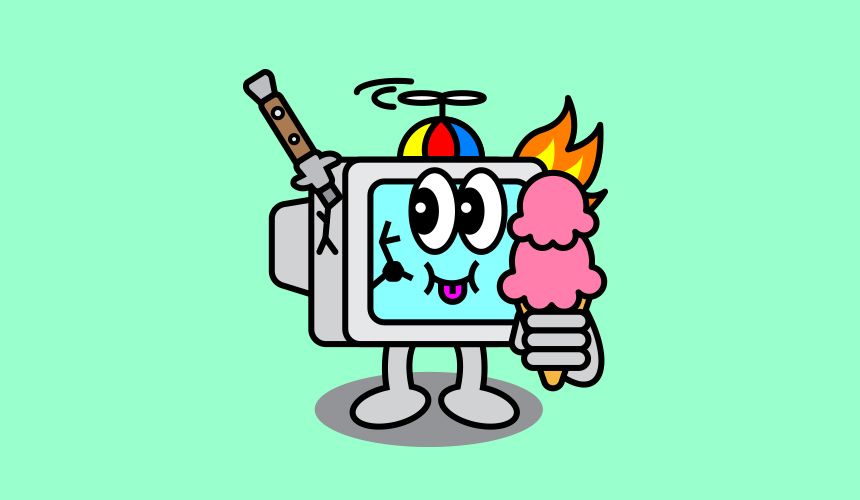Stuck in a loop: remembering the 20th anniversary of Burn All GIFs
The web is stuck in a loop–a GIF loop, that is.
It’s an odd thing to think about now but, as formats go, GIFs have a tumultuous past. They’re a way to share an animated picture or video, which sounds like a normal and delightful thing to do if it weren’t for the fact that GIFs are the victim of the web’s greatest failed assassination attempt.
You may have heard the story once before, but let’s recount it for anyone too busy using Giphy to worry about the origins of these tiny artworks. On November 5, 1999, the website Burn All GIFs demanded wiping the format off the internet forever, thanks to a legal dispute over the use of LZW, the technology powering them.
There’s a long and fascinating back story behind that battle, but savvy readers (and anyone alive) will note that, well, the coup didn’t work. The GIF was resurrected after the patent for LZW expired and here we are, living on loop.
We found out the GIF was eternal the day it was almost killed
GIFs represent our desire to remember and to express. They’re “tiny notes passed between those who know,” says Lori White, an independent film director and viral storyteller who has worked at Upworthy and on GIF-friendly projects with filmmakers like Taika Waititi. Like film, she notes, “GIFs can pick up when words leave us.”
They’re a surprisingly controversial method to express emotion or ideas, and who can say what memories should be shared and documented on the web?
“Our brains are highly evolved to process body language and facial expression visually. That makes the GIF the perfect vehicle for conveying in full color and richness an emotion, mood, or reaction, which language alone could only sketch,” technology writer and editor Will Oremus shared.
Think of all the micro-expressions that could have been wiped away like yesterday’s at-capacity hard drive if Burn All GIFs succeeded. Despite their more endearing qualities aspects, we’re no closer to a general consensus on GIFs than we were in 1999. The battle is no longer on legal grounds (except occasionally for FIFA), and would-be assassins are ready to kill GIFs again.
GIF critics argue the format is a poor reflection of the range of nuanced human expression; others raise the matter of its impact on culture. In an interview, investigative reporter Ken Klippenstein compared the use of GIFs to a reliance on Gmail's auto-suggested replies tool, calling their popularity a "constant reminder of how image-saturated and perfunctory everything is" on the web. Fair enough. Anyone who has been on the receiving end of a poorly-chosen GIF can appreciate the awkward pain they induce. But are we willing to get rid of it, forever?
Throwing out the baby GIF with the bathwater GIF
Considering its broad flexibility, it would be more surprising if the GIF wasn't controversial. But what makes anti-GIF arguments unique when compared to say Y2K scare or music file-sharing services like Napster is that no one wanted all emergency preparedness efforts and the sharing of music to stop. No one criticized MySpace because they hated friends. The GIF is being made into a scapegoat for what it represents: a world with limited resources.
As much as it can and does do for us, the web has always been limiting as a venue for expression; its controversies are regularly forgotten and remembered. Engadget senior editor, and creator of the , Roberto Baldwin says that what makes a GIF special is that “not everyone can wax poetic about their emotions. These tiny strings of images are short stories we can share with others that do that and so much more.”
It's the little format that could. Burn All GIFs rendered both a harsh judgment that beckons us to ensure we are in control of the terms of self-expression. Long gone are the days where GIFs were only the domain of fandoms. They rule us all.
“GIFs are a great way to cut through some of the barriers written communication can create,” GIF-maker and editor-at-large at Media Matters Parker Molloy says. “This comes in handy if you're trying to emphasize that you're being sarcastic, happy, sad, and so on. The truth, though, is that anyone can make GIFs of their own.” Even if that feeling is as simple as asking, “what now?” (a GIF made by Molloy)–and even if it’s a fleeting moment–do people deserve a web reflective of their experiences?
This extremely online matter is going to be adjudicated offline, in the real world, where history forgotten can repeat itself on an endless loop, too. In the case of the threatened, controversial, and publically maligned GIF, the format is simply imitating life. As the anonymous GIF-luencer @darth says, "here can we enjoy the GIF forever."
Keep the GIFs alive by enjoying more from Glitch:
- Host a Party: GIF Party (Glitch app)
- Listen: How GIFs Became Embedded in Our Culture (Function Podcast)
- Rebel: Create a PNG file (Glitch app)
- Listen: GIFs as Blackface (Function Podcast)

